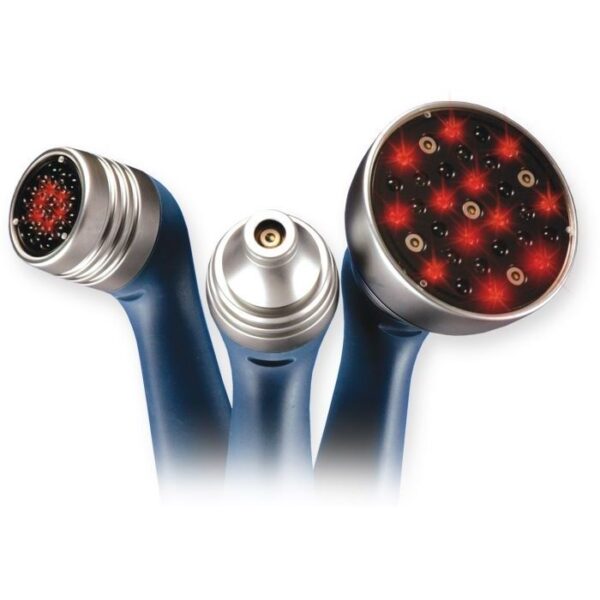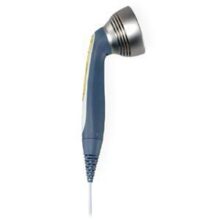A 13 diode cluster applicator that delivers laser, SLD (Superluminescent Diode), and LED (Light-Emitting Diode) therapy is a medical device used in phototherapy or light therapy treatments. It combines different light sources, each with its own unique characteristics and therapeutic benefits, to provide a comprehensive approach to phototherapy.
Laser Diodes
Laser diodes emit coherent and monochromatic light with a single wavelength. LLLT, commonly known as laser therapy, utilizes low-intensity laser light to stimulate cellular processes and promote tissue healing and pain relief. Laser therapy is effective in addressing specific medical conditions, such as musculoskeletal injuries, chronic pain, and wound healing.
Superluminescent Diodes (SLDs)
SLDs emit broader-spectrum light compared to lasers, with a range of wavelengths. SLD therapy provides a more scattered and less focused beam of light compared to lasers. It is often used for skin conditions, dermatological treatments, and superficial tissue healing. It can also promote collagen production, reduce inflammation, and improve skin texture.
LEDs (Light-Emitting Diodes)
LEDs emit non-coherent, polychromatic light with various wavelengths LED therapy is versatile and can be used for a wide range of applications, including skin rejuvenation, wound healing, pain management, and general wellness. It is also known for its ability to penetrate superficial tissues, making it suitable for surface-level treatments.
The combination of laser, SLD, and LED sources in a 13 diode cluster applicator allows healthcare professionals to tailor phototherapy treatments to meet the specific needs of their patients and target a variety of medical conditions. The choice of light source and wavelength can be adjusted based on the condition being treated and the desired therapeutic outcomes.
This versatility makes 13 diode diode cluster applicators valuable tools in physical therapy, dermatology, pain management, and rehabilitation settings, as they offer a wide range of treatment options and can address a diverse set of patient needs. When used by trained healthcare professionals, these applicators can provide effective and non-invasive therapies to promote tissue healing, reduce pain, and improve overall well-being.







Commentaires
Il n'y a pas encore de commentaires